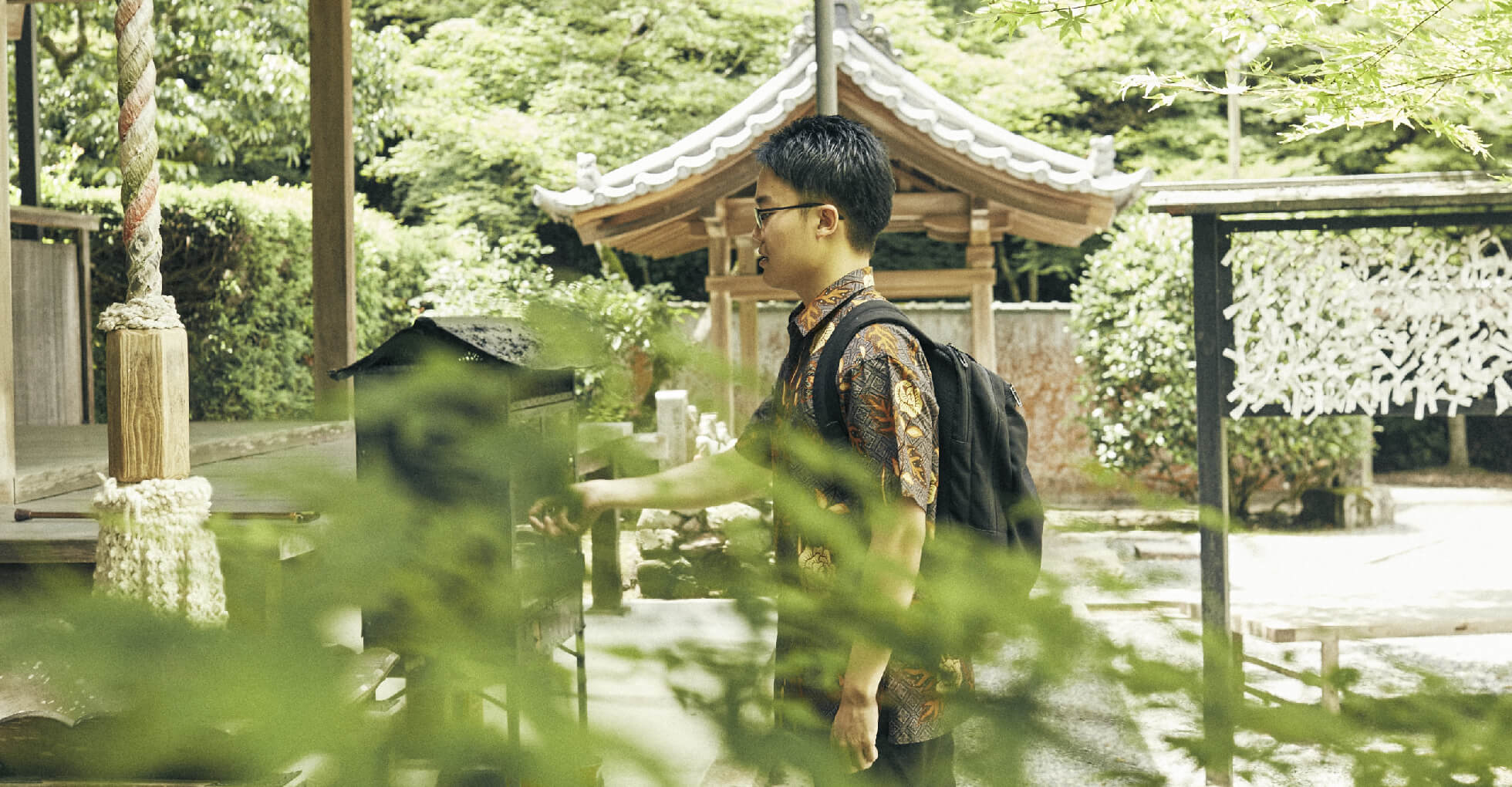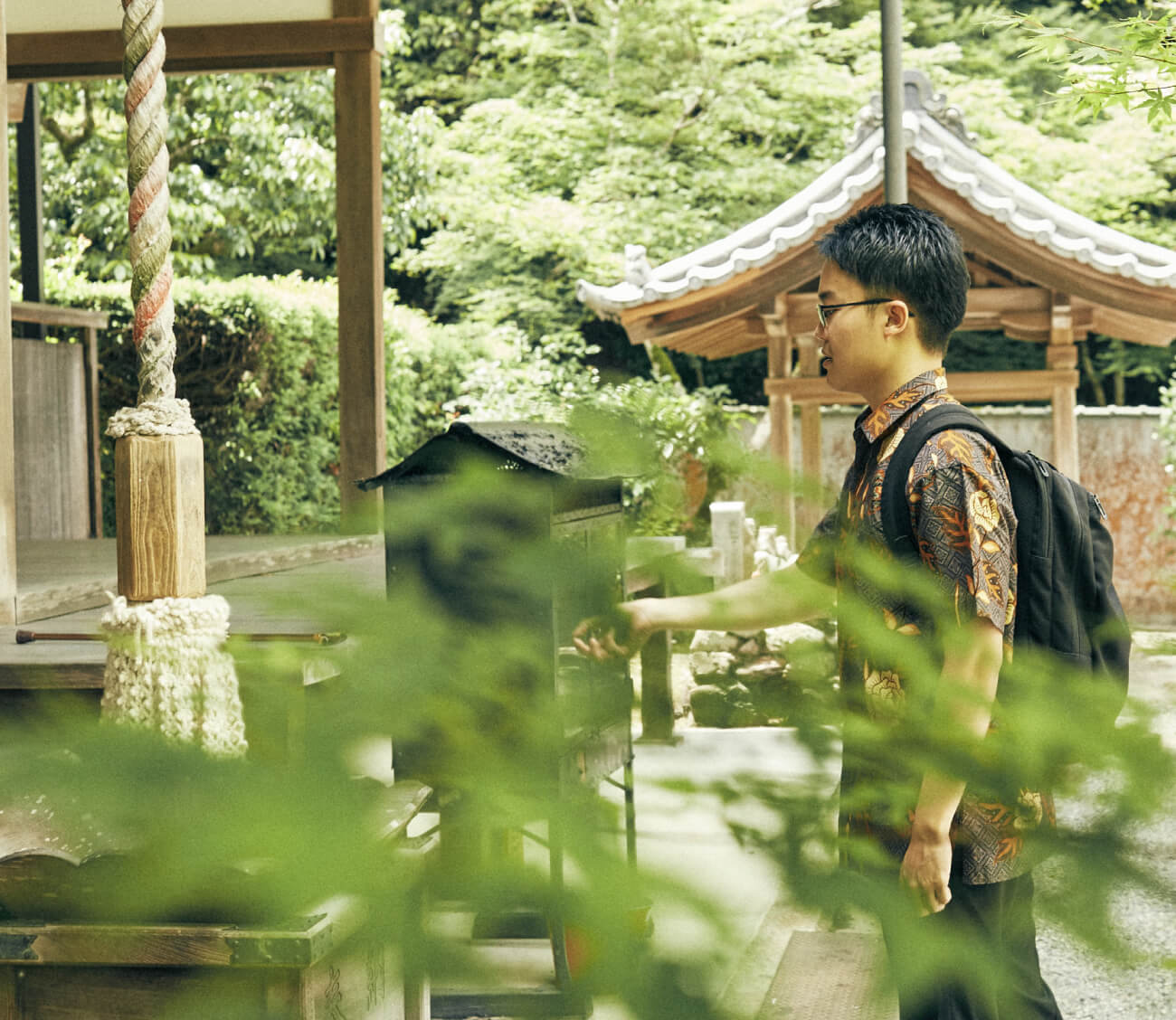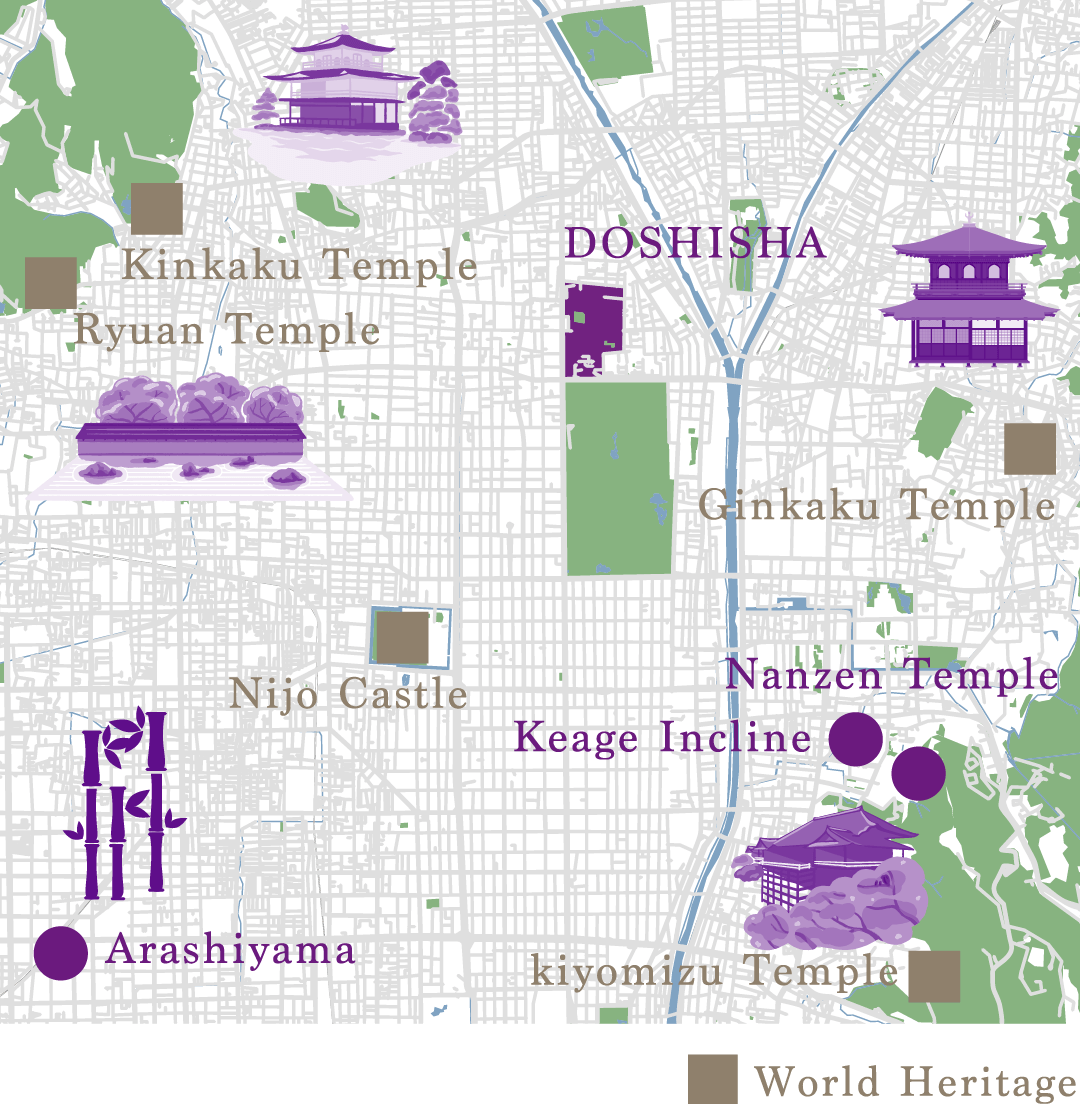

AROUND
DOSHISHA
— Devin Sukardi

Devin Sukardi
Faculty of Commerce
4th-year student
I’m Devin from Indonesia. I found out about Doshisha when I was at a Japanese language school. I heard from the school’s teachers and others that Doshisha is one of the most highly regarded universities in Japan. I am in the Faculty of Commerce, but it is very fun that I can also take classes in liberal arts subjects and other faculties, not just my specialized field. That is an embodiment of Doshisha University’s liberalism. Doshisha University has a lot of students and it is interesting to build various networks with people who have different backgrounds. Also, Kyoto, where Doshisha is located, is the center of Japanese culture and is “a city where scholars are developed.” Below, I will introduce some highlights around the university.


There are many historically and culturally important shrines, temples, and other buildings within bicycling distance of the university.
Keage Incline

Close to Nanzenji Temple is the former site of the world’s longest inclined railway, stretching 582 meters. The inclined railway was constructed to transport boats. Some 90 Yoshino and mountain cherry trees have been planted along the railway, which can be walked between the rows of trees to enjoy the blossoms when they are in full bloom in the spring.

There are many World Heritage sites in Kyoto. The city itself is like a museum. Sometimes I go sightseeing with university professors and friends. Contact with historical and cultural objects broadens one’s interests, and in that sense too Kyoto is a good environment for learning.
Nanzenji Temple


Nanzenji Temple is said to have the highest rank among Japan’s Zen temples. It was founded in 1291 on the site of the tonsured Emperor Kameyama’s detached palace. It is also a popular tourist site that bustles with lots of visitors during the cherry blossom and fall foliage seasons.
Nanzenji Temple is one of my favorite places among Kyoto’s tourist sites. It is a bit outside the city center, and I like the quiet atmosphere with a lot of greenery.


I also like the design of the Nanzenji Aqueduct, which runs through the temple’s grounds, with its arched legs. There is a lot of shade, and I sometimes come here to cool off on hot days.
Arashiyama

 Arashiyama is one of Kyoto’s leading tourist sites. It is a nationally designated Historic Site and Place of Scenic Beauty. The “Bamboo Forest Path” is like a green tunnel with bamboo growing straight up and making a covering overhead. The beautiful scenery of the Bamboo Forest, which appears frequently in TV dramas and commercials, evokes a feeling of Japan.
Arashiyama is one of Kyoto’s leading tourist sites. It is a nationally designated Historic Site and Place of Scenic Beauty. The “Bamboo Forest Path” is like a green tunnel with bamboo growing straight up and making a covering overhead. The beautiful scenery of the Bamboo Forest, which appears frequently in TV dramas and commercials, evokes a feeling of Japan.
Comment
Kyoto is the heart of Japanese culture. I think it has an environment that stimulates the desire and interest to learn. Kyoto also has a strong sense of community and is an interesting place for making different kinds of networks. Studying at the university is of course important, but I also hope to have experiences that could affect my future and make connections with many people through various activities while I am in school.



